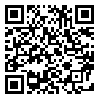BibTeX | RIS | EndNote | Medlars | ProCite | Reference Manager | RefWorks
Send citation to:
URL: http://jhehp.zums.ac.ir/article-1-28-en.html


 , Reza Kalantari *2
, Reza Kalantari *2 
 , Elham Ahmadi Kionani3
, Elham Ahmadi Kionani3 
 , Ahmad Zanjirani Farahani2
, Ahmad Zanjirani Farahani2 
 , Mehrdad Kamrani2
, Mehrdad Kamrani2 

2- Department of Occupational Health Engineering, School of Public Health, Tehran University of Medical Sciences, Tehran, Iran.
3- Department of Occupational Health Engineering, Shahid Beheshti University of Medical Sciences, Tehran, Iran.
Background: Work-related musculoskeletal disorders (WMSDs) may involve all parts of the body, and have been a worldwide problem. Employed women are two to five times more likely to report such problems, and assembly lines suspected to induce more WMSDs because of high rate of repetitive motions.
Methods: The aim of this study to determine the prevalence of WMSDs in women workers of an automobile manufacturing assembly line. In this cross-sectional survey, 50 women workers in an automobile manufacturing assembly line were studied. Data was collected based on Nordic questionnaire. The statistical analysis was performed by the SPSS 11 software.
Results: The MSDs prevalence rate was 98%. The most reported complaint was related to the back (68%) and there was a significant relationship between prevalence and pain severity with age and working years. Moreover, the duration of feeling pain per day, and pain severity had a significant relationship with the capability of the person to continue working.
Conclusion: Workstations ergonomically improvement and employing men instead of women would be effective to reduce the problems.
Received: 2015/09/5 | Accepted: 2015/10/11 | Published: 2016/03/16
| Rights and permissions | |
 |
This work is licensed under a Creative Commons Attribution-NonCommercial 4.0 International License. |
© 2024 The Author(s)

.png)



